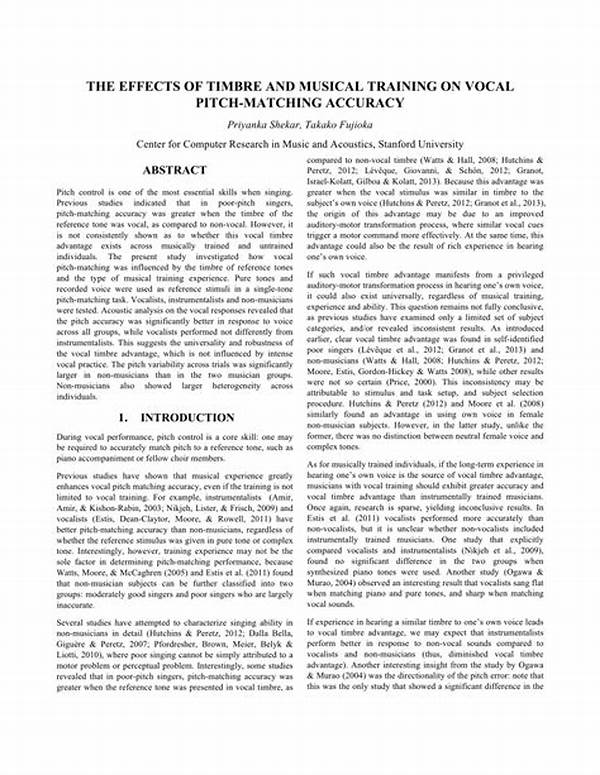
Training For Rough Vocal Timbre
- Daniel Anderson
- 0
- Posted on
Vocal training isn’t just about hitting the right notes or having a wide range. Some singers aim to cultivate a distinctive roughness in their voice that can add emotion and raw energy to their performances. This journey to achieve a rough vocal timbre is both an art and a science, requiring practice, dedication, and technique. Whether you’re a rock enthusiast or a jazz aficionado, training for rough vocal timbre can help in bringing authenticity and grit to your sound.
Read Now : Emotional Healing From Previous Love
Getting Started with Training for Rough Vocal Timbre
Training for rough vocal timbre isn’t just about pushing your voice to its limits. It’s about finding that sweet spot where your natural tone meets a little bit of grit. You don’t wanna run before you can walk, bro. Start off by keeping it cool and warming up your cords, like you would warm up a car engine in the dead of winter. Techniques like humming and lip trills are your basic ammunition. They’re a piece of cake but extremely important to condition your vocal muscles and strengthen your core skills.
Think about engaging your diaphragm — it’s like upgrading to a better sound system. You want strong support without a scratchy throat. Keep hydrated like you’re a fish, cause dryness is the enemy here. Once you’ve nailed the basics, you can experiment with distorting your voice. Dive into the mindset of the genre you’re aiming for; be it rock, metal, or blues, the training for rough vocal timbre depends heavily on psychological immersion. More than just notes, you’re telling a story with that raspy vibe. Keep it genuine!
Essential Techniques of Rough Vocal Training
1. Vocal Fry – Dive into the deep end with vocal fry. It’s as edgy as it sounds! A killer tool for training for rough vocal timbre.
2. Growling – Want that primal shout? Growling adds a fierce texture to your sound, central in training for rough vocal timbre.
3. Breath Control – Breath is life, and for this task, it’s your ace in the hole. Get that control tight, and watch your rough vocal timbre skyrocket.
4. Relaxation – Ironically, chillin’ out can give your voice that intense edge necessary for training for rough vocal timbre.
5. Resonance Techniques – Let’s talk vibrations, dude. Resonance shifts elevate your rough notes to a whole ‘nother level. Essential in training for rough vocal timbre.
Protecting Your Voice While Training for Rough Vocal Timbre
When you embark on the path of training for rough vocal timbre, you’re putting your vocal cords through a fair bit of stress. So it’s crucial to protect them like a samurai guards their sword. Hydration, once again, ain’t something to skip on. It’s underrated, as keeping those vocal folds moist is key in preventing damage.
Steer clear of foods and drinks that dry you out, caffeine is a culprit here. Besides that, vocal rest is your best mate. It’s not always about singing nonstop, sometimes you gotta hit pause and chill. Don’t mimic your favorite rocker if it strains you. Every voice has its limits, and recognizing them is part of the game. Training for rough vocal timbre, when done with care, makes your sound both striking and sustainable over your career.
Slang Phrases Used in Training for Rough Vocal Timbre
1. “Crank Up the Volume” – When diving into the loud and raw tones, cranking up the volume gives life to training for rough vocal timbre.
Read Now : Bravely Seeking Hidden Truths
2. “Rockstar Grit” – The gritty, raw strength of a performer’s sound is pivotal when training for rough vocal timbre.
3. “Powerhouse Pipes” – Describes having strong vocal ability, especially when achieving the rough textures.
4. “Raspy Gold” – That perfect raspy sound that singers aim for through training for rough vocal timbre.
5. “Screamin’ Eagle” – A wild, powerful voice characteristic developed in the process of training for rough vocal timbre.
Practice Makes Perfect in Training for Rough Vocal Timbre
Training for rough vocal timbre isn’t something you get perfect overnight. It’s all about putting in the work, just like a sculptor chiseling away piece by piece. Get yourself into a routine where you’re consistently working those vocal muscles. Try new techniques, give yourself time to explore and find what fits your vocal range.
Slang’s part of the process; we’re talking about feeling the vibe and transforming pretty sounds into a soulful delivery. Keep a journal of your progress — it’s not just for diary keepers, it helps track that vocal journey. Collaboration with other musicians can open doors and bring new perspectives to your training for rough vocal timbre. Recall that legendary sounds didn’t come from just slay dragons; it came from hours spent perfecting the craft. Stick with it and watch as your distinctive vocal character emerges.
The Essentials of Training for Rough Vocal Timbre
Training for rough vocal timbre is all about embracing that guttural, textured sound. We’re channeling energies of titans like Janis Joplin and Kurt Cobain. It doesn’t mean you’re screaming your lungs out; it’s more about the finesse and how you manipulate vibes. The goal is to get raw, but still be able to finesse your volume and clarity.
Everybody’s voice is distinct. You dig out your own lane and run with it. Using slang can infuse personality into the craft. Instead of saying you’re a singer, you might drop “voice artist, crafting my sound.” You’re not just following vocal routines; you’re creating a map of your sound. Training for rough vocal timbre is your personal revolution; it’s about pushing boundaries, learning what works, and spicing it up along the way. Keep it genuine, keep it fresh.